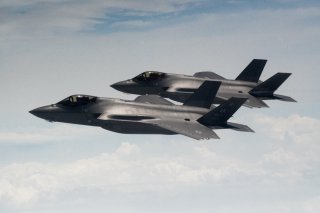Sixth-Generation Aircraft Will Control Fleets of Killer Drones
Unmanned Collaborative Combat Aircraft are being built to support sixth-generation manned aircraft.
Air Force Secretary Frank Kendall has said that the manned variant of the emerging sixth-generation Next Generation Air Dominance (NGAD) system will likely control as many as five drones at one time. This will introduce new tactics, massively expand the mission scope of stealth fighters, and enable dispersed networked weapons and surveillance nodes to increase attack and reconnaissance options.
Many of the details of this small family of manned and unmanned platforms are not available due to security reasons, because they are still being developed, or both. The unmanned systems being built to support sixth-generation manned aircraft are likely to emerge much sooner than a manned variant. The requirements for unmanned systems, called Collaborative Combat Aircraft (CCA), are still unclear but Air Force Acquisition Executive Andrew Hunter told reporters that the drones are being built according to key operational imperatives.
“We need an aircraft that can perform operations in denied airspace and make sure we have the ability to establish freedom of maneuver. We’ve had successful uncrewed platforms going back decades. It’s challenging to have a platform able to operate in denied air space,” Hunter said.
CCAs will come in various sizes and operate as surveillance nodes and also attack platforms.
“We need a platform that is affordable so we can get some mass and not something too expensive that we can’t afford to lose. We are doing design trades. It needs to be able to assist the mission of the NGAD system, and it will involve a weapons-carrying capacity to work with a piloted aircraft,” Hunter said.
While the manned NGAD is expected to be ready for operations around the end of the decade, the CCAs could be here “soon,” Hunter said. “Industry is expanding R&D and ready for an acquisition program.”
The prospect of multiple networked CCAs working in close coordination with a manned host plane introduces new tactical possibilities, in large measure because they will be networked to one another as well as to a manned aircraft performing command and control. Controlling drones from the air will reduce latency by avoiding having to send data through a ground station, which streamlines time-sensitive data transmission and shortens sensor-to-shooter time. An armed forward drone, for instance, could autonomously identify a target, use onboard computer processing, and enable a human decisionmaker to destroy enemy targets from stand-off distances. Advanced algorithms and artificial intelligence (AI)-enabled data processing can analyze a host of mission variables from disparate streams of incoming sensor information.
Kris Osborn is the defense editor for the National Interest. Osborn previously served at the Pentagon as a Highly Qualified Expert with the Office of the Assistant Secretary of the Army—Acquisition, Logistics & Technology. Osborn has also worked as an anchor and on-air military specialist at national TV networks. He has appeared as a guest military expert on Fox News, MSNBC, The Military Channel, and The History Channel. He also has a Master’s Degree in Comparative Literature from Columbia University.
Image: DVIDS.

